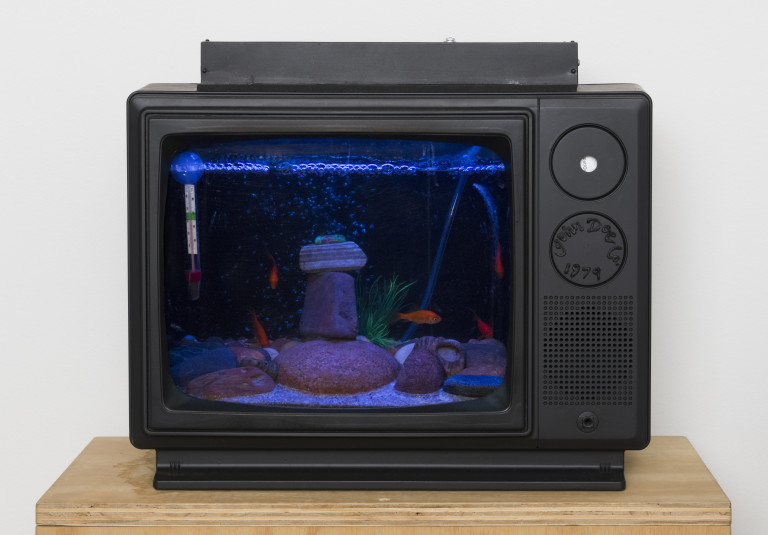Carl Cheng has long questioned the role of individuals in a mass media society driven by corporate interests. His registered entity, John Doe Co., which he established in 1967, has served as a means to engage with and at the same time critique corporate culture (in addition to offering the Asian-American artist a sense of anonymity in the face of American Vietnam War-era racism). The use of corporate materials embeds John Doe Co. artworks in the absurdist visual discourse of American consumerism, an aspect of life Cheng continues to question in his art of the present day. John Doe Co.’s nature machines serve, as Cheng writes, to “model nature, its processes and effects for a future environment that may be completely made by humans.”
During 1974, in the months before President Richard Nixon’s resignation on August 8, while the Watergate scandal was gripping the nation, John Doe Co. debuted a new line of products, the Alternative TV series (1974), in the windows of several independent bookstores on Berkeley’s Telegraph Avenue. Using salvaged television sets, Cheng replaced the tube with “rock landscape aquariums” filled with stones, plastic plants, and small objects found on the beaches of the Pacific during his travels. He described these devices as optimal for the “highest definition viewing of [a] new alternative channel.” Cheng’s vision of a world where the natural and artificial are comingled has a utopian, idealistic spirit. “To me, what’s important is getting art into society. We have so much ugliness here in our environment. Things are so throw-away,” he said.
